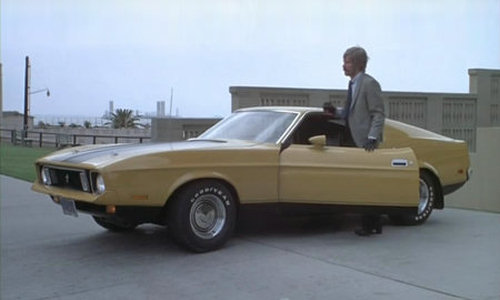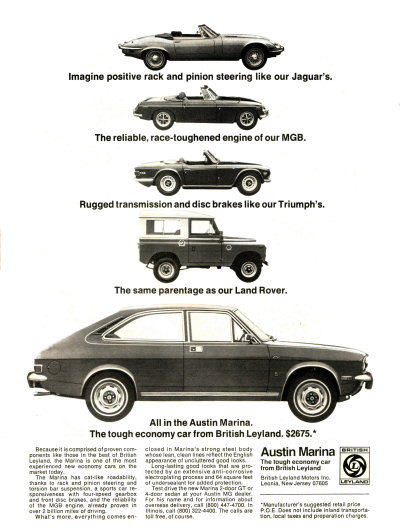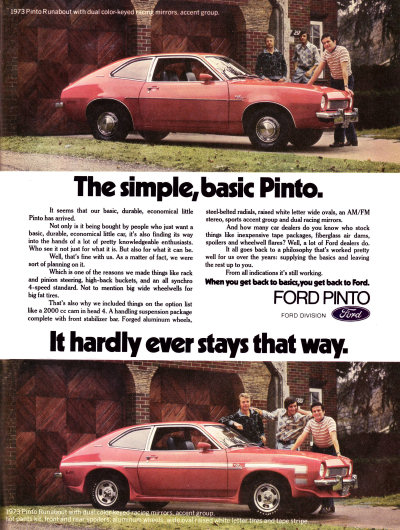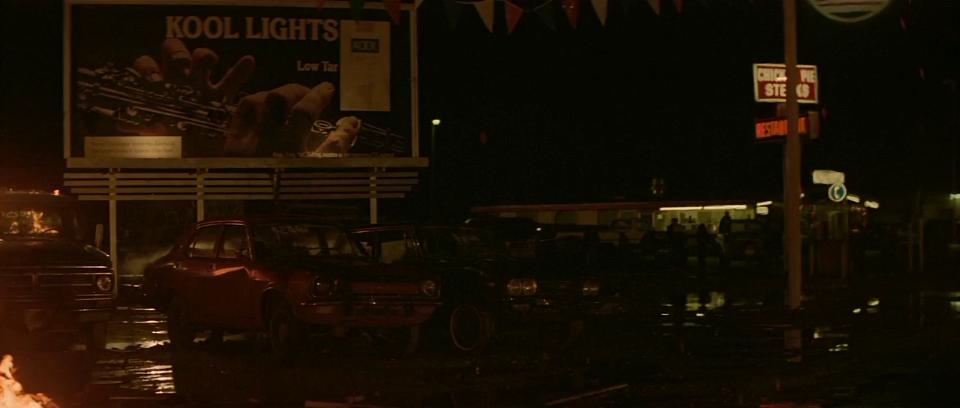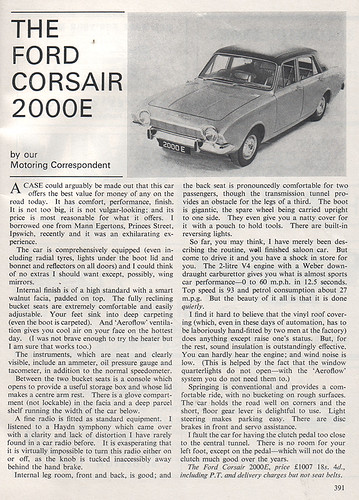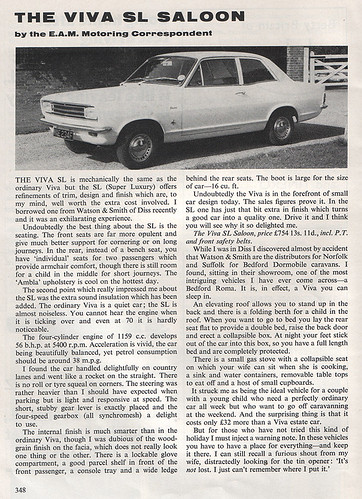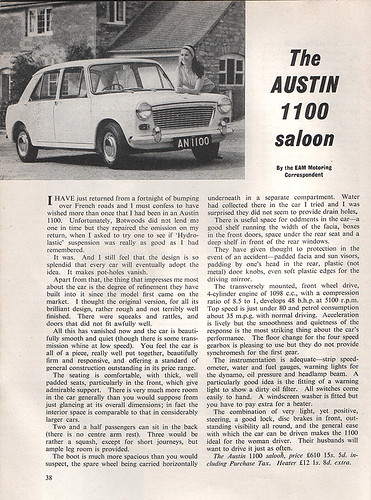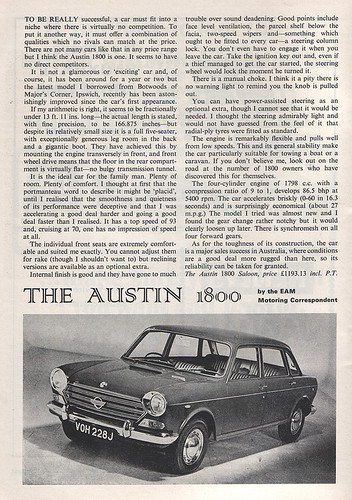Having quite a lot of old car magazines (old as in the magazine itself), I thought it'd be nice to have a look at a few of them. Rather than a great big scan-a-thon of every page - which might be considered unfair by the writers - a look at some selection of interesting bits within, plus a bit of commentary and context. Moto-Scat is all about CONTENT, isn't it?
Motor Trend: June 1973
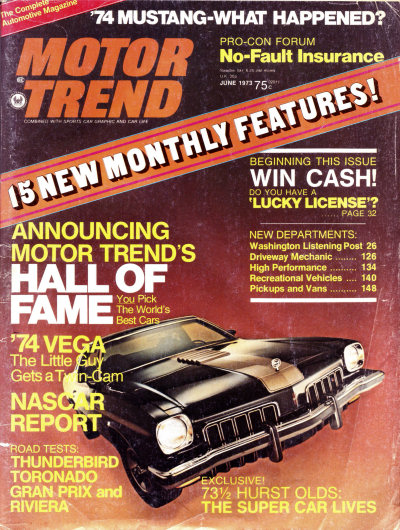
At this time, America was suffering under the worldwide stock market crash of 1973-74. Whilst the oil crisis and recession were still months away, the economy was nonetheless suffering. As a result, the relatively new breed of small-engined subcompact cars were gaining popularity - notably the Chevrolet Vega, Ford Pinto and AMC Gremlin. In addition, budget-market imports skyrocketed - European and Japanese imports were commonplace for thrifty drivers, though the antiquated Beetle was now starting to falter against more modern designs such as the Datsun 510 and Toyota Corolla, with their advertising subsequently changing tack from cheap car to cool lifestyle choice.
The US motor industry also became the subject of increased safety regulation - September 1972 saw the introduction of Federal Motor Vehicle Safety Standard 215 - the rule that cars shouldn't sustain damage to "safety-related components" under an impact to front (5mph) or rear (2mph). Subsequently, 1973 model year cars sported enormous bumpers - particularly noticable on smaller cars.
In addition, the 1970 amendments to the Clean Air Act imposed increasingly tough standards on vehicles - targets of reducing carbon monoxide and hydrocarbons by 90% by the 1975 model year (based on 1970 models) and the same of nitrogen oxide by the 1976 model year (based on 1971 models). High-compression muscle car engines, which generally used 100RON fuel, suffered as fuel octane ratings dropped to 91RON, largely due to the loss of tetraethyl lead and subsequent the phase-in of unleaded. As a result, new muscle cars were low-compression, strangled by emissions devices and often became little more than a "sticker package" version of an ordinary model.
However, for the consumer, times were good. A much wider variety of cars existed than before. Domestic manufacturers were forced to compete with imports - usually well-equipped and cheap - in turn improving their own ranges for the benefit of price-conscious consumers. And whilst environmental rules killed the muscle car, luxury barges still had a fair old future ahead of them.
The opening article to this issue sums up quite well the view of motoring journalists of the time, so I've reproduced it here. As you can see, there's mixed feelings, but quite a lot to be happy about - gives a good taste of what's ahead.
---

"These are far-reaching changes, but in the long run they signal another benchmark in Motor Trend's unparalleled growth as the most influencial mass-consumer automotive magazine of our time. As we see it, the '70s will be as distinct from the '60s as the '30s were from the 20's - a time of paring away affluences we really can't afford." It seemed like a good thing to say two years ago this month. It still is.
Then, June of 1971, the event was the announcement of the merging of Sports Car Graphic magazine into Motor Trend and the promise to bring you an automotive magazine whose purview knew no national boundaries. Now it's June, 1973, and the occasion is the announcement with this issue that we are adding a whopping 15, count 'em 15, additional regular features to our crammed informational package. Which is mind boggling, when you consider Motor Trend is already established as bridging the information gap with news about more phases of the automobile and the things that affect it, than anyone before has ever assembled.
Never before have Americans been so interested in the autmobile, its performance, economics, manufacture and general industry. But, it is not the traditional American bigger, better, drag-strip acceleration and boulevard-ride type of interest. Little by little, partly in response to governmental requirements but mostly competition and changing customer values, auto manufacturers in general seem to be pointing toward what may be a true product renaissance.
Hints of what's ahead can be seen everywhere. Small cars. Larger cars. Small cars with large prices. Foreign cars with American-Like options and American cars with Foreign-Like handling. A flourishing 10-million U.S. car market (30 million worldwide) where both super economy cars and super luxury cars do well.
Proliferating powerplants. Rotaries, Turbines, Steam. Steam? Yes, steam. Exhaust gas recirculation. Catalytic convertor mufflers. CVCC (controlled volume cylinder combustion). Gas rationing. Buyers Protection Plans. Front-wheel-drive. Four-wheel-drive. Front engine. Mid-engine. Five-mile-per-hour bumpers. Air bags. Hatchbacks, Fastbacks, Kammbacks. Camper backs. Rack-and-pinion steering. Radial tires. Bias-belted tires. Everywhere there is revolution and the promise of better things ahead.
Simultaneously, caught up in the spirit of the times, more than ever before, carmarkers are genuinely trying to improve not only the quality of their products but the service to keep them going. Service is probably the industry's single biggest problem and although it was created by a myopic kind of all-the-traffic-will-bearism in the '60s, you will see tremendous improvements soon. For instance, the fact that General Motors would study in detail Volkswagen's computer diagnostic service approach indicates, as well as anything, Detroit willingness to use good ideas.
Consequently, in relation to all of this, the role of the automotive magazines in the middle. '70s is different as well. For a time, perhaps a decade ago, it was enough, even fashionable, to be critical of everything Establishment. The home industry especially was an obvious, defensive, easy and deserving target. Most companies seemed about as vulnerable as the Maginot line as they tried to reorient themselves from a violent case of market vertigo where nothing they did or made seemed relevant. Time and time again they took opportunities for greatness and converted them into public debacles.
But the pendulum has swung back. The industry has headed off their critics and in some cases, proved their critics were at least partly wrong. They are going to meet the 1975 and '76 emissions standards. They are producing safer cars. And, they have demonstrated great imagination and resourcefulness responding to the challenge, and in the process, created the most interesting saleable products in their history. What is desperately needed now are sources of reliable information to sort through the veritable maze of product fallout. That's what Motor Trend is about.
Two years ago when the impact of the consumerism movement was only vaguely apprehended, we declared that objective, toward a broader subject base and more kinds of information. The features we showcase in this June issue and every issue hereafter will help us do just that.
---
So, interesting times to come! Whilst steam cars never really made the cut, practically everything else did - a surprisingly accurate portrayal of the future.
Here's a couple of bonus adverts to get you into 1973-mode (Barrett can skip these as he's already there).

The Scent of Hirst.
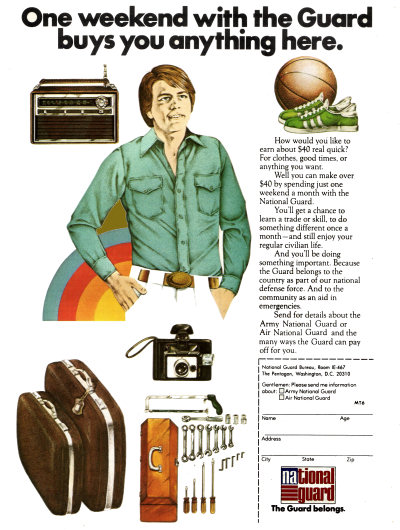
Another plus is that you can go mental and execute people like that mad kid in Earthquake.
I'll leave you to digest that for a bit before coming back with some more from the same issue - comments welcome.



